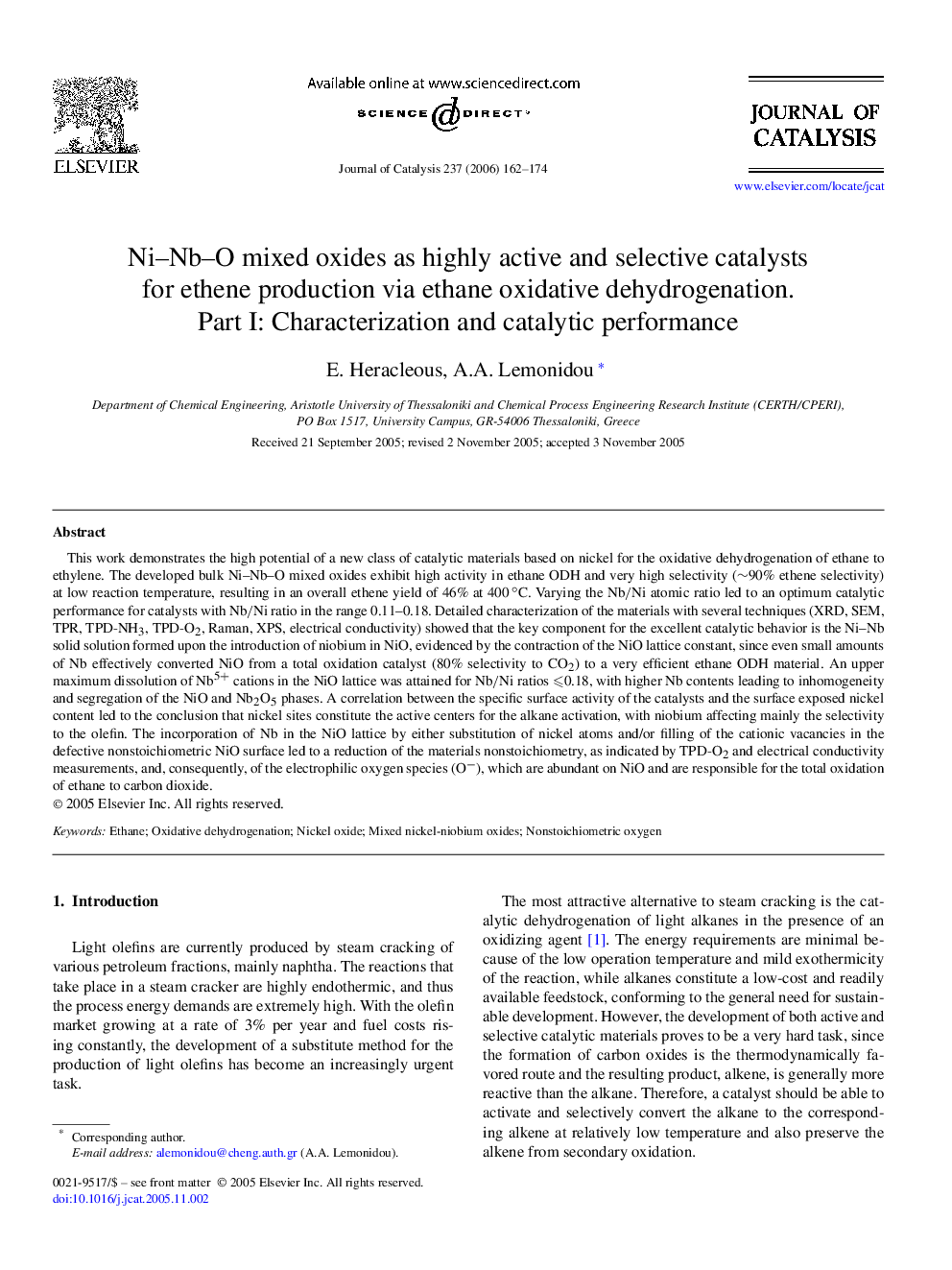| کد مقاله | کد نشریه | سال انتشار | مقاله انگلیسی | نسخه تمام متن |
|---|---|---|---|---|
| 63425 | 47687 | 2006 | 13 صفحه PDF | دانلود رایگان |

This work demonstrates the high potential of a new class of catalytic materials based on nickel for the oxidative dehydrogenation of ethane to ethylene. The developed bulk Ni–Nb–O mixed oxides exhibit high activity in ethane ODH and very high selectivity (∼90% ethene selectivity) at low reaction temperature, resulting in an overall ethene yield of 46% at 400 °C. Varying the Nb/Ni atomic ratio led to an optimum catalytic performance for catalysts with Nb/Ni ratio in the range 0.11–0.18. Detailed characterization of the materials with several techniques (XRD, SEM, TPR, TPD-NH3, TPD-O2, Raman, XPS, electrical conductivity) showed that the key component for the excellent catalytic behavior is the Ni–Nb solid solution formed upon the introduction of niobium in NiO, evidenced by the contraction of the NiO lattice constant, since even small amounts of Nb effectively converted NiO from a total oxidation catalyst (80% selectivity to CO2) to a very efficient ethane ODH material. An upper maximum dissolution of Nb5+ cations in the NiO lattice was attained for Nb/Ni ratios ⩽0.18, with higher Nb contents leading to inhomogeneity and segregation of the NiO and Nb2O5 phases. A correlation between the specific surface activity of the catalysts and the surface exposed nickel content led to the conclusion that nickel sites constitute the active centers for the alkane activation, with niobium affecting mainly the selectivity to the olefin. The incorporation of Nb in the NiO lattice by either substitution of nickel atoms and/or filling of the cationic vacancies in the defective nonstoichiometric NiO surface led to a reduction of the materials nonstoichiometry, as indicated by TPD-O2 and electrical conductivity measurements, and, consequently, of the electrophilic oxygen species (O−), which are abundant on NiO and are responsible for the total oxidation of ethane to carbon dioxide.
Journal: Journal of Catalysis - Volume 237, Issue 1, 1 January 2006, Pages 162–174